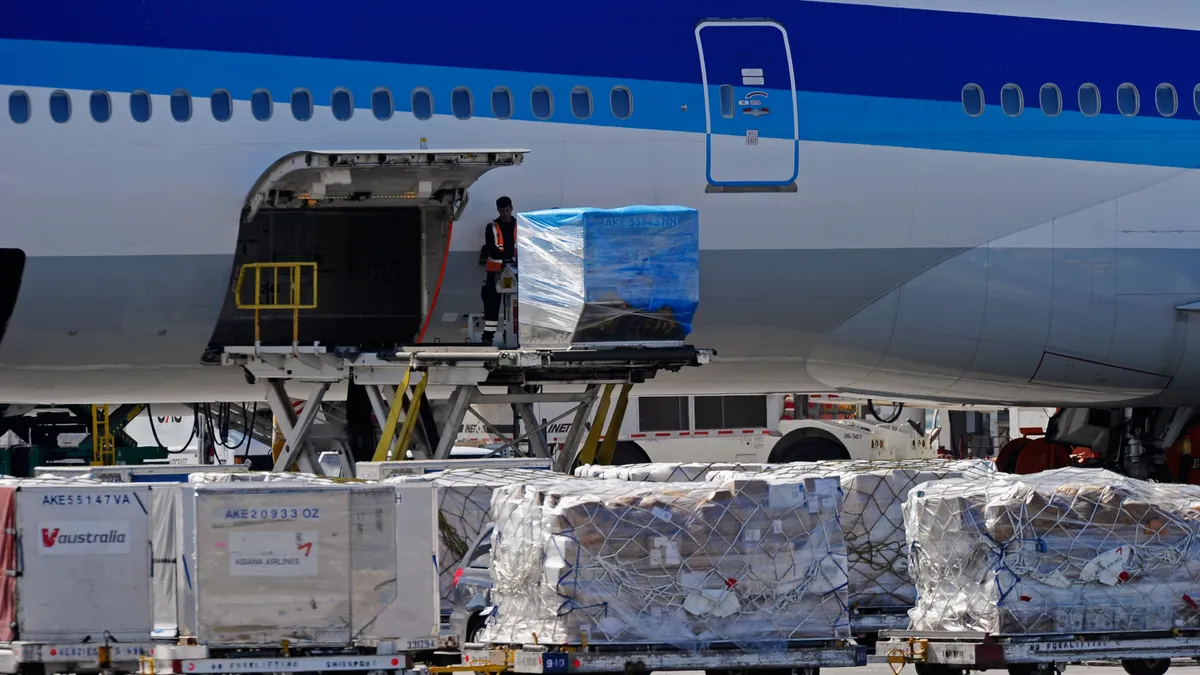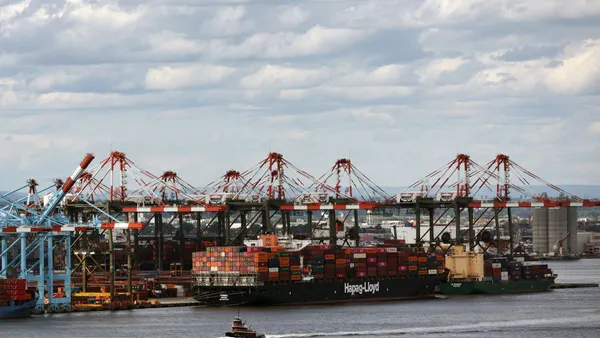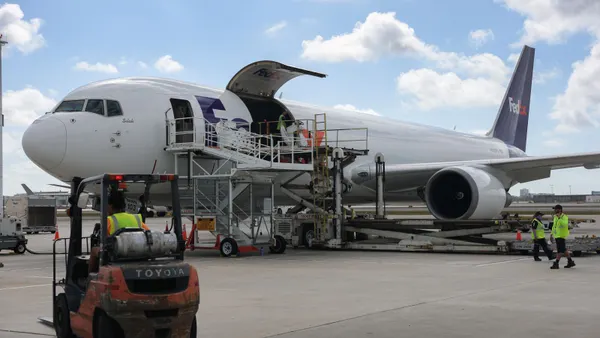Dive Brief:
- Global air cargo spot rates fell in August for the fourth consecutive month, down 3% year over year to $2.55 per kilogram, likely due to economic uncertainty and a shift in trade flows, Xeneta reported Sept. 4.
- For example, many e-commerce shipments from China-U.S. have been redirected to Europe following the U.S. de minimis ban. The reallocation is dragging down the global average spot rate.
- The decline in August spot rates is likely to be more extreme once currency effects are accounted for. Xeneta reported that all rates are converted into U.S. dollars, which have dropped 4% against other global currencies in the past year.
Dive Insight:
Air freight is seeing a bigger market share after a modal shift in July, in addition to e-commerce, Xeneta reported. August demand rose 5% year over year for the second consecutive month.
“We’ve now reported +5% growth in demand for July and August and it would be easy to take some comfort from these volumes were it not for the current market conditions,” said Chief Airfreight Officer Niall van de Wouw. “Right now, volumes are certainly not as bad as people feared, but also not as good as people hoped.”
The shippers influencing air cargo growth fall into three categories, said van de Wouw. First are the traditional air cargo customers that consistently ship goods by air, juxtaposed with shippers unable to justify the higher cost of air to ocean. Between the two extremes, a big group of shippers use ocean shipping when possible and air freight when needed — this group is what is driving the upturn in air demand, he said.
“Many shippers looking to lessen the impact of tariffs just do not know how the market will look in 3-4 weeks’ time because of the lack of clarity,” said van de Wouw. “Consequently, I think more businesses are deciding to take a hit and move their products by air — but this good news for the air cargo market remains under constant review. Overall, it’s hard to see where strong, sustainable airfreight growth will come from.”
De minimis
The end of the de minimis exemption Aug. 29 has caused further market turbulence.
Low-value e-commerce goods were a major driver of double-digit demand growth in Q4 2023 and throughout 2024. However, the recent removal of the de minimis threshold may significantly impact the 2025 peak season, according to van de Wouw.
While it may seem like the de minimis is targeting B2C, the changes now in effect also greatly impact B2B shipments into the U.S., said van de Wouw. He added that some small- and medium-sized businesses are trying to navigate the challenge.
Several postal carriers in other countries have restricted U.S.-bound shipments following the new compliance requirements, per Xeneta. Canada, the United Kingdom and Mexico — which account for a majority of the affected flow besides China — will “feel the pinch.”
“The starting point for closing the de minimis threshold was mainly politically motivated against the big Chinese e-commerce platforms,” said van de Wouw. “But the widening of this legislation is levelling the playing field again for all e-commerce shipments entering the U.S, and I would now expect to see lower e-commerce volumes moving by air from Europe to the U.S. If anything, observers suggest this will now benefit China because of its lower production cost base.”















